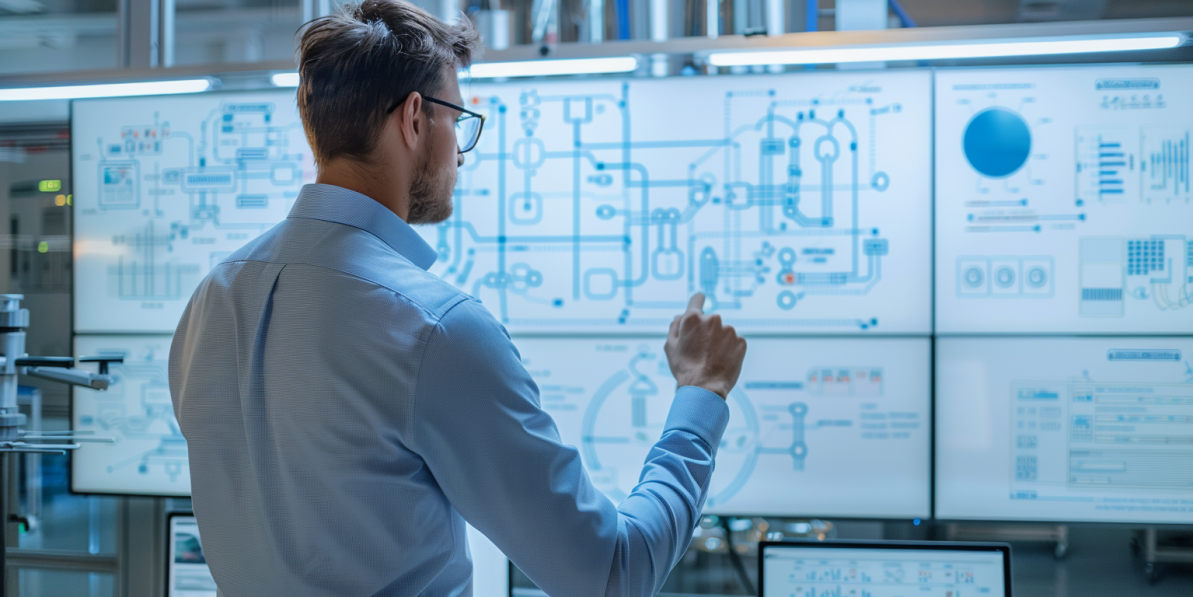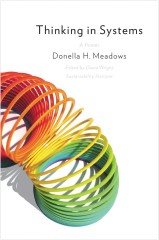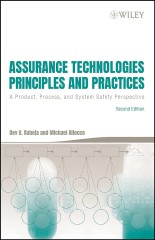When it comes to developing software or any other product, understanding the difference between functional and non-functional requirements is crucial. These two types of requirements serve different purposes but are equally important for successful product development. In this article, we will explore the distinction between functional and non-functional requirements and discuss their significance in the development lifecycle.
Table of Contents
- What are Functional and Non-functional Requirements?
- Why is it Important to Know the Difference?
- Key Differences between Functional and Non-Functional Requirements
- Functional and Non-functional Requirements: A Beginner’s Guide
- The Car Analogy
- Software Examples
- Key Takeaways
- Best Practices for Documenting Requirements
- Strategies for Effective Requirement Management
- Challenges and Pitfalls in Managing Functional and Non-functional Requirements
- The Relationship between Functional and Non-functional Requirements
- Balancing Trade-offs
- Continuous Requirement Refinement
- Tools for Requirement Management
- Conclusion
What are Functional and Non-functional Requirements?
Functional requirements: These requirements specify the features, functionalities, and behaviors that a product must have to satisfy user needs. They focus on what the system should do and how it should respond to user actions.
Non-functional requirements: These requirements define the qualities and characteristics of a product. They specify criteria for evaluating the system’s performance, reliability, security, usability, and other non-behavioral aspects.
Why is it Important to Know the Difference?
Understanding the difference between functional and non-functional requirements is essential for several reasons. It helps stakeholders have a clear and shared understanding of project goals, facilitates effective communication between teams, and enables appropriate resource allocation and task prioritization.
The Purpose of Functional Requirements
Functional requirements serve as the building blocks of a product. They describe the specific features, behaviors, and interactions that the system should exhibit. By documenting functional requirements, the development team ensures that the product meets user expectations and delivers the intended value.
The Purpose of Non-functional Requirements
Non-functional requirements focus on how the system should perform. They define the quality attributes, constraints, and criteria that the product must meet. These requirements address factors such as performance, security, reliability, usability, scalability, and maintainability. Non-functional requirements ensure that the product not only functions correctly but also provides a satisfactory user experience and complies with industry standards.
Recommended Further Reading Amazon BooksKey Differences between Functional and Non-Functional Requirements
Here is a comparative table that highlights the key differences between functional and non-functional requirements.
| Criteria | Functional Requirements | Non-functional Requirements |
|---|---|---|
| Definition | Specify the behaviors, features, and functionalities the product must possess. | Define the quality attributes, performance measures, and constraints the product must meet. |
| Focus | What the system should do. | How the system performs tasks and under what conditions. |
| Examples | User authentication, data processing, generating reports. | Scalability, reliability, usability, security, performance. |
| Purpose | Ensure the product meets user needs and provides intended value. | Ensure the product is user-friendly, secure, and meets industry standards. |
| Documentation | Uses use cases, user stories, and functional specifications. | Described through performance benchmarks, quality attributes, and regulatory standards. |
| Impact on Development | Directly affects the development tasks and functionalities to be implemented. | Influences the overall system design, architecture, and choice of technology. |
Examples of Functional Requirements
Let’s explore some examples of functional requirements in different domains.
E-commerce Website:
- Allow users to create an account.
- Enable users to add items to their shopping cart.
- Provide a secure checkout process.
- Allow users to track their order status.
Project Management Software:
- Enable users to create and manage tasks.
- Allow users to assign tasks to team members.
- Provide a dashboard for tracking project progress.
- Generate reports based on project data.
Examples of Non-functional Requirements
Here are some examples of non-functional requirements highlighting different aspects.
Performance:
- The system should load web pages within 2 seconds.
- The response time for database queries should be less than 100 milliseconds.
Usability:
- The user interface should be intuitive and easy to navigate.
- The system should support multiple languages for international users.
Functional and Non-functional Requirements: A Beginner’s Guide
If you’re new to software development or product management, the concepts of functional and non-functional requirements might seem a bit abstract. Let’s break them down using a simple analogy and some everyday examples.
The Car Analogy
Imagine you’re buying a new car. The requirements you have for this car can be divided into two categories: functional and non-functional.
Functional Requirements (What the car does)
- The car should be able to drive forward and reverse
- It should have working headlights and taillights
- The car should have a functioning radio
- It must have seatbelts for all passengers
Non-functional Requirements (How well the car performs)
- The car should be able to go from 0 to 60 mph in under 8 seconds
- It should get at least 30 miles per gallon of fuel
- The car should have a quiet interior (noise level below 70 decibels when driving)
- It must be able to start reliably in temperatures as low as -10°F
Software Examples
Now, let’s apply this to software development with some simple examples:
Functional Requirements Examples
- User Registration:
- Users should be able to create an account
- The system must send a verification email after registration
- Users should be able to log in with their email and password
- Online Shopping Cart:
- Users should be able to add items to their cart
- The system must calculate the total price including taxes
- Users should be able to remove items from their cart
Non-functional Requirements Examples
- Performance:
- The website should load within 3 seconds on a standard broadband connection
- The system should be able to handle 10,000 concurrent users without slowing down
- Security:
- User passwords must be encrypted in the database
- The system should automatically log out inactive users after 30 minutes
- Usability:
- The user interface should be navigable using only a keyboard
- The application should be compatible with screen readers for visually impaired users
Key Takeaways
- Functional requirements describe what the system should do. They are about features and functionalities.
- Non-functional requirements describe how well the system performs its functions. They are about performance, security, reliability, and other quality attributes.
- Both types of requirements are crucial for creating a successful product that not only works as expected but also provides a good user experience.
- When gathering requirements, always consider both functional and non-functional aspects to ensure a comprehensive understanding of what needs to be built.
Remember, in real-world projects, the line between functional and non-functional requirements can sometimes be blurry. The important thing is to capture all necessary aspects of the system, regardless of how they are categorized.
Best Practices for Documenting Requirements
To ensure clarity, consistency, and completeness in documenting requirements, consider following these best practices:
- Use a standardized template for requirement documentation.
- Clearly define and categorize functional and non-functional requirements.
- Involve stakeholders and gather their input during the requirement gathering process.
- Ensure requirements are measurable, specific, and actionable.
- Regularly review and update requirements throughout the development lifecycle.
Understanding the distinction between functional and non-functional requirements is crucial for effective product development. Functional requirements define what the system should do, while non-functional requirements focus on how it should perform. By clearly defining and documenting these requirements, teams can work together towards developing products that meet user expectations, deliver value, and comply with industry standards.

Strategies for Effective Requirement Management
Managing requirements effectively is vital for successful product development. Here are some strategies to enhance requirement management practices:
- Prioritize requirements: Identify the critical functional and non-functional requirements early on and prioritize them based on their impact on the product’s success.
- Ensure traceability: Establish traceability between requirements and other artifacts such as design documents, test cases, and user stories to maintain consistency and facilitate change management.
- Use a collaborative approach: Involve all relevant stakeholders, including users, business analysts, developers, and testers, in the requirement gathering and validation process to ensure a comprehensive understanding of the product’s needs.
- Validate requirements: Regularly validate requirements with stakeholders to ensure accuracy, completeness, and alignment with business objectives.
- Consider scalability and flexibility: Anticipate future needs and design requirements that can accommodate growth and changes in the product or business environment.
- Employ prototyping and feedback: Create prototypes or mockups of the product to gather early feedback from users and stakeholders, which can help refine and improve requirements.
Challenges and Pitfalls in Managing Functional and Non-functional Requirements
Managing functional and non-functional requirements presents a unique set of challenges and pitfalls that can significantly impact the success of a project. Understanding these issues and knowing how to effectively address them is crucial for any systems engineer or project team.
Overemphasis on Functional Requirements
Challenge: Often, teams can become overly focused on functional requirements—the “what” and “how” of a system—neglecting non-functional requirements, which dictate the quality and operational criteria the system must meet.
Tip: Balance is key. Begin incorporating non-functional requirements early in the planning stage to ensure they receive as much attention as functional needs. Regularly review both sets of requirements with stakeholders to confirm that neither is being overlooked.
Vagueness and Ambiguity
Challenge: Requirements that are poorly defined or ambiguous can lead to misunderstandings, resulting in products that fail to meet expectations or require significant rework.
Tip: Ensure each requirement is clear, measurable, and testable. Use precise language and, where possible, quantify the requirements (e.g., “The system must load the user dashboard within 2 seconds”).
Evolving Requirements
Challenge: Requirements often change during the project lifecycle due to evolving market trends, user needs, or stakeholders’ changing priorities, leading to scope creep and project delays.
Tip: Adopt an agile approach to project management that allows for flexibility and regular revisiting of requirements. Employ iterative development, where requirements can be refined and prioritized in each cycle.
Underestimating Non-functional Requirements
Challenge: Non-functional requirements can be underestimated in terms of their technical and resource implications, leading to underperformance issues in the final product.
Tip: Conduct thorough impact analysis for non-functional requirements to understand their implications fully. Leverage expertise from specialists (e.g., security analysts for security requirements) to ensure requirements are realistic and achievable.
Prioritization Issues
Challenge: With a long list of requirements, it’s challenging to distinguish between what’s necessary and what’s nice to have, potentially leading to wasted resources on low-priority features.
Tip: Use a prioritization method, such as MoSCoW (Must have, Should have, Could have, Won’t have this time) or numerical ranking, to clearly identify and focus on high-priority requirements first.
Lack of Stakeholder Involvement
Challenge: Insufficient stakeholder involvement can result in requirements that are out of touch with user needs or business objectives, making the final product less effective.
Tip: Engage stakeholders from the outset and maintain regular communication. Utilize workshops, interviews, and prototype testing to gather valuable feedback and ensure requirements align with expectations.
Integration and Interoperability
Challenge: Ensuring seamless integration and interoperability between various system components can be overlooked, leading to compatibility issues and functional discrepancies.
Tip: Address integration and interoperability as specific non-functional requirements. Plan for comprehensive system testing that includes integration, system, and acceptance testing phases.
By acknowledging and preparing for these challenges and pitfalls, teams can develop a proactive approach to requirements management, ensuring a smoother project lifecycle and a product that meets or exceeds expectations. Balancing the focus on both functional and non-functional requirements, ensuring stakeholder engagement, and adopting agile methodologies are key strategies to mitigate these common issues.
The Relationship between Functional and Non-functional Requirements
Functional and non-functional requirements are interconnected and influence each other in product development. The achievement of non-functional requirements often relies on the implementation of specific functional features. For instance, ensuring high performance (a non-functional requirement) may require the optimization of certain functions or algorithms (functional requirements).
Balancing Trade-offs
During product development, it’s common to encounter trade-offs between functional and non-functional requirements. Sometimes, fulfilling a specific functional requirement may compromise certain non-functional aspects. Finding the right balance is crucial to deliver a product that meets user needs while maintaining acceptable performance, usability, and quality.
Continuous Requirement Refinement
Requirements are not set in stone. They evolve throughout the development process based on user feedback, changing market dynamics, and technological advancements. Embrace an iterative approach to requirement refinement, allowing for continuous improvement and adaptation to ensure the product remains relevant and competitive.
Tools for Requirement Management
Several tools are available to aid in requirement management, such as Reqi a leading requirement management software, collaborative platforms, and version control systems. These tools provide features for capturing, documenting, organizing, and tracking requirements, making the management process more efficient and effective.
Conclusion
Functional requirements guide the specific features and behaviours of product development, while non-functional ones dial in on the product’s qualities. Both requirements types weave together, forming products that match user expectations and perform at an optimal level.
Successfully managing these requirements involves considering trade-offs and continuously refining strategies. With this approach, developers can deliver products that hit the mark, satisfying their target audience. The interplay of functional and non-functional requirements essentially breathes life into user-centric, top-tier products.
























